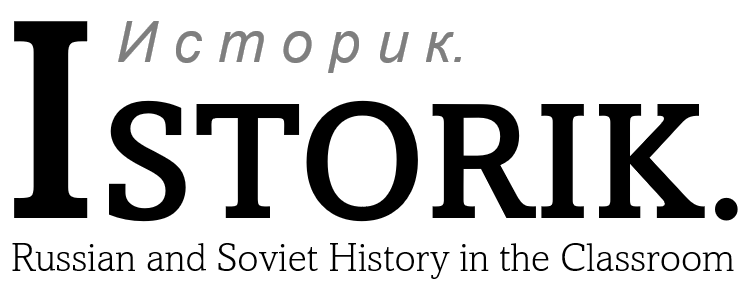Google Images is a blessing and a curse. On the one hand, it’s now almost embarrassingly easy to find a vast array of visual sources from a historical period. On the other, typing key words into a search engine and clicking on an eye-catching picture requires so little thought that it can lead us to overlook the true significance of a source.
Posters provide some of the richest visual material on the
Soviet era, giving fascinating insights into the preoccupations and mindsets of
Soviet political elites. We might be tempted to use visual sources as a way of
easily conveying messages to students who are reluctant, or lack the skills or confidence,
to read extended historical texts. But these sources can also give what has
been called a “sense of period” by highlighting the nature of how messages were conveyed at the time.
This post provides an explanation and outline of one approach to using posters from the Soviet period, c. 1917-1964, as a tool to (re-)tell the story of the period.
Resources can be found on the Google Drive, here.
In
Context
The Bolsheviks and later ruling Communists valued visual art
for their messages. As Victoria Bonnell, author of the terrific Iconography
of Power, points out, “[v]isual methods for persuasion and indoctrination
appealed to Bolshevik leaders because of the low level of literacy in the
country and the strong visual traditions of the Russian people.”
Posters themselves are particularly useful for considering questions of Soviet politics and power. In a recent book on Stalin’s personality cult, Anita Pisch notes that posters of the Soviet leader “provide evidence for analysis of the way in which the leadership wished to present itself and the regime”. In short, posters are not just propaganda, but political expressions of self.
There are a number of fantastic websites detailing Soviet-era posters, including:
- Seventeen Moments in Soviet History (https://soviethistory.msu.edu/)
- Duke University Library’s collection (https://repository.duke.edu/dc/russianposters)
- Soviet Posters website (https://www.sovietposters.com/)
- International Poster Gallery (https://www.internationalposter.com/country-primers/soviet-vintage-posters/)
- David Winton Bell Gallery, Brown University Library (https://library.brown.edu/cds/Views_and_Reviews/index2.html)
- Poster Plakat (https://www.posterplakat.com/)
Here, though, I main used the excellent collection at the
Russian website Plakaty.ru, which has an English-language website here: https://plakaty.arthive.com/en.
My aim was to find posters that would give a clear sense of
the periods my students had studied from the Soviet era, from the 1917 revolution
and Civil War, through the NEP, Stalinist, World War Two, and post-war periods.
This, in turn, would I hoped enable students to identify broader themes across,
and comparisons and contrasts between, distinct periods.
Key Considerations for Teaching
- It’s important to point out the obvious point that these posters were made as propaganda by the Soviet state
- It’s equally important, though, to tell students that posters served a practical and emotive purpose in a society which had previously seen very high rates of illiteracy
- When selecting posters, it’s worth thinking carefully about how they relate to the content students are learning – doing so allows us to use posters to tell the Soviet story
- Finally, if we don’t want posters to be a tag-on – they make up the bulk of the lesson here – students must be encouraged to engage in depth and detail with visual sources, rather than simply passing over them as illustrations of written texts
Vocabulary
and Substantive Concepts
Before tackling this lesson, students should have a grasp of the following terms and their meanings.
- propaganda
- literacy
- Bolshevik/Communist
- dictatorship
- revolution
- civil war
- NEP
- collectivisation
- industrialisation
- terror
- Great Patriotic War/World War Two
- Cold War
- antisemitism
Lesson Outline
and Resources
- Prior to the lesson, students are given an A3 summary sheet with the whole story of the USSR, c. 1917-1964, in brief – they are to read through this and summarise the key thematic elements in the four columns.
- At the start of the lesson, students have 10 minutes to share in pairs/threes their findings on the sheet to establish the wider picture.
- Students are then given small laminated copies of the posters in pairs/threes. At this stage, the posters have no dates or text, except for English translations of the main straplines from each poster. Students’ task is to firstly sequence the posters, placing them in the correct order according to the narrative they have been given.
- As a class, we check the order of the posters until the order is agreed – students need here to explain their reasoning in order to demonstrate understanding of periods.
- Once the order is established, students are then given an A3 sheet with all posters in – their task is to provide rough dates for each poster and accompanying captions. This provides a springboard for revision of the whole course ahead of final exams.
Further
Reading
Victoria Bonnell, Iconography of Power, University of
California Press (1997)
Anita Pesch, The Personality Cult of Stalin in Soviet
Posters, 1929-1953: Archetypes, Inventions and Fabrications, Australia
National University Press (2016)
Useful Websites
Seventeen Moments in Soviet History (https://soviethistory.msu.edu/)
Duke University Library’s collection (https://repository.duke.edu/dc/russianposters)
Soviet Posters website (https://www.sovietposters.com/)
International Poster Gallery (https://www.internationalposter.com/country-primers/soviet-vintage-posters/)
David Winton Bell Gallery, Brown University Library (https://library.brown.edu/cds/Views_and_Reviews/index2.html)
Poster Plakat (https://www.posterplakat.com/)
Plakaty.ru (https://plakaty.arthive.com/en)







No comments:
Post a Comment